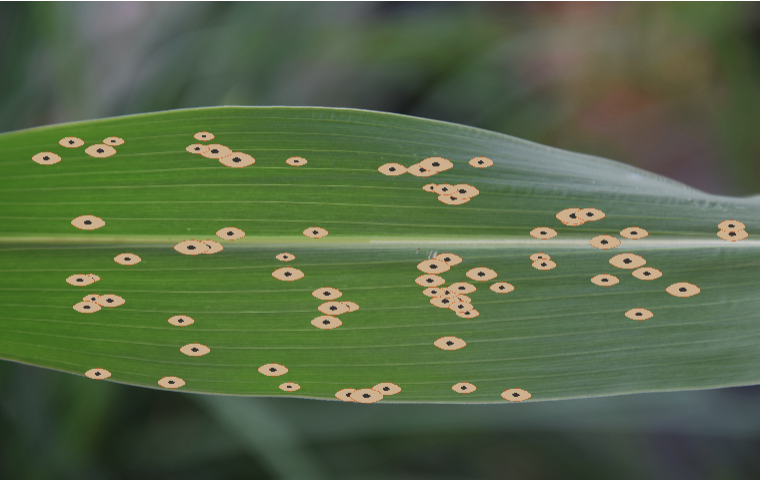Harvest Considerations for Corn Fields with Tar Spot
There has been major increases of tar spot disease in several area corn fields. Tar spot does very well in cool humid conditions, this is why several corn fields in the area have rapidly begun turning brown about 2 to 4 weeks early. At this time it is too late to make any foliar fungicide applications due to pre-harvest intervals, and they are not effective after the milk stage. High levels of tar spot can cause early death and dry down which increases risk of lodging and can decrease test weight and yield.
in the area have rapidly begun turning brown about 2 to 4 weeks early. At this time it is too late to make any foliar fungicide applications due to pre-harvest intervals, and they are not effective after the milk stage. High levels of tar spot can cause early death and dry down which increases risk of lodging and can decrease test weight and yield.
Important steps for farmers at this time are to scout fields and identify those fields that have heavy infestations of tar spot. This step will help prioritize which fields and or areas of fields that may need to be harvested earlier. A tool to help determine severity of disease can be found at this site: https://severity.cropprotectionnetwork.org/crop/corn
Fields that are intended to be harvested for corn silage or high moisture grain for livestock feed need to be monitored for moisture and harvested before the plants and grain become too dry which can lead to poor fermentation and problems in storage. Tar spot its self does not have any known mycotoxins, but there is a possibility that the stressed plants may have other disease organisms that cause mycotoxins on them. So, it is recommended to test feeds for mycotoxins.
For fields that will be harvested for grain, knowing which fields have tar spot can help prioritize the harvest order of fields, and farmers may need to consider earlier harvest of some fields before lodging becomes severe. It may be necessary to consider the risks of lodging and the added costs of drying costs on the grain when determining harvest timing.
Any questions, please contact:
Bill Halfman, UW Extension Agriculture Agent Monroe County
Phone: 608-269-8722,
Email: william.halfman@wisc.edu




